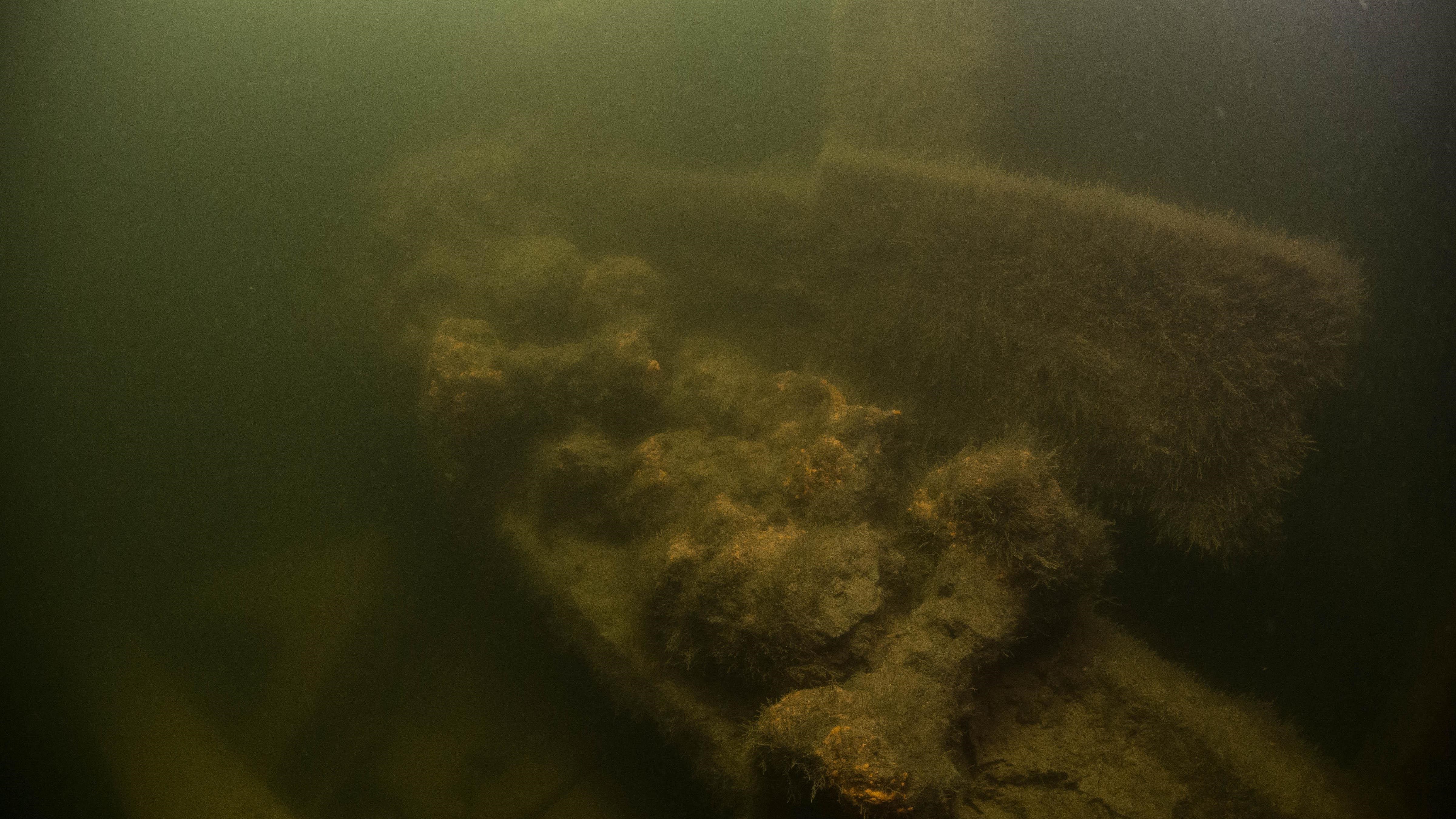
St. Nikolai
The wreck is located south of Kotkansaari, between Kuutsalo and Mussalo, near the main route leading to Kotka. The wreck has a protected area designated under the Antiquities Act of 1976. Diving in the protected area requires permission from the Finnish Heritage Agency.
The wreck is believed to be the remains of the Russian archipelago fleet's oar-driven frigate, St. Nikolai. This three-masted, 38-cannon frigate represented a new type of vessel. The ship was approximately 40 meters long and 9.75 meters wide. Its framework is made of oak, and the hull planking is made of spruce.
The bow mast of the wreck is in place but broken, the middle mast lies across the deck, and only the lower part of the stern mast remains. The ship was equipped with a figurehead, and the bow had two levels with cannons placed on the upper deck. There are parts of the wreck removed or collapsed around the stern and on the left side of the bow. Outside the wreck's right side, or the northern side, there are loose pieces scattered over an area of more than 500 square meters.
The wreck was discovered in 1948 during a sea route improvement survey conducted by the Finnish Maritime Administration off the coast of Kotka. The city of Kotka sent a helmet diver to inspect the observation, and the diver saw a large intact warship with cannons resting at a depth of 17 meters. It was known that the wreck was linked to the events of the Battle of Svensksund. During the Russo-Swedish War of Gustav III, naval battles took place off the coast of Kotka in 1789 and 1790. The latter was one of the greatest victories in Swedish naval history, with the Russians losing thousands of men and over 60 ships either sunk or captured as spoils of war. The Swedish losses were smaller. One significant event during the battle was the sinking of St. Nikolai with its crew. The discovered wreck was located in the area where the naval battle was most intense, and where the largest Russian ships formed the center of the battle line. The wreck is also a burial site.
Efforts were made to quickly make the wreck fully visible. An attempt to raise it was made in 1953 but was unsuccessful. Parts of the wreck, including the figurehead, rudder, two masts, winch, and various smaller artifacts, were lifted. At that time, there was no Antiquities Act protecting old wrecks, and the methods of maritime archaeology and systematic documentation were not well-known.
Systematic measurement and drawing of the wreck began in the early 1960s. This activity was part of an active phase of Finnish maritime archaeological research, in which divers interested in wrecks collaborated with museum personnel. The wreck was also studied in the 1970s and 1980s. During the investigations, numerous artifacts were recovered from the wreck at different times, including travel tools, copper kopecks from the 1770s-1780s, coffee cups, cut wine glasses, other utensils, wine bottles, leather footwear, shoe buckles, buttons, hourglasses, navigation instruments, and other tools. The artifacts recovered during the wreck's research are now part of the collections of the Finnish Maritime Museum and the Kymenlaakso Museum, managed by the Finnish Heritage Agency.